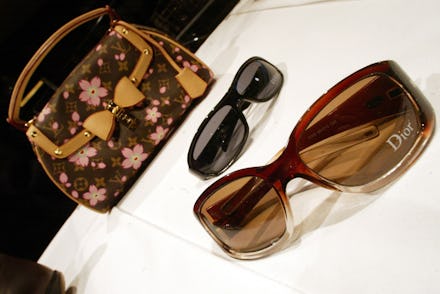What’s the real difference between knockoff and counterfeit?

We are living in an age when anything from designer clothes to bags to makeup — and really any product from the fashion and beauty industries — can be easily and cheaply be copied and sold for less.
It’s become such a prevalent problem that entire apps have been made to help prevent people from being duped into buying fake bags themselves. Every day, it seems, another brand is claiming it’s being ripped off by a company. Just recently, Kylie Cosmetics had to deal with its copiers, and even an entire faked website, with black markets trying to sell their own “Kylie Cosmetics” — among lots of other popular makeup products — for far, far less.
But in truth, although the words “knockoffs” and “counterfeit goods” are used interchangeably in a lot of stories dealing with one company or person copying another, they’re actually two very different things.
With New York Fashion Week just ending, we thought it’d be wise to break down just how the two words are different, because in a few weeks, we’ll probably see some counterfeit goods inspired by this past season.
According to Nakia D. Hansen, IP attorney at Odegard Law in Brooklyn, New York, counterfeit goods are meant to be identical copies. If you’re walking down the street and see a booth selling bags that look like Gucci or Louis Vuitton, logo and all, for $50, then those are counterfeit goods.
“Counterfeit goods are identical copies (often poorly and more cheaply made) of the original goods,” Hansen said in an email. “It may have [for example] the Hermès brand colors, logo, shape, hardware, lining, and style of Birkin. But the leather is probably fake, the fixtures cheap metal, the stitching poorly done, etc. Though it’s made to look like a genuine Birkin bag, it is indeed not from Hermès or made with any Hermès’ authorization whatsoever.”
An example of just how powerful this counterfeit market is, Alexander Wang had a legal win last year over a group of websites that were selling fake Wang goods, and he was awarded $90 million.
Now knockoffs, on the other hand, aren’t exactly trying to fool someone into thinking they’re designer, and they are not exact copies. They may evoke the style of the original good or product, but no logo is used.
We’ve seen a lot of examples of knockoffs at Forever 21 and Zara, whenever they emulate a design from another designer, like Zara did with Brother Vellies last September. It may be the same style or design, but there is no logo to try to convince you that it is indeed designer.
“With the Hermès example, a company like Zara or H&M might offer a bag that has a similar shape and hardware to a Birkin,” Hansen explained. “So customers who like the style of a Birkin but can never afford one might achieve the desired look. The knockoff won’t include the name, logo or other protected features of the original, but it will get close enough to evoke that style.”
Adidas has gone head-to-head with Payless over producing sneakers with stripes, for example, and Forever 21 and Gucci are currently going through a bit of a legal battle over certain colored stripes, too. In both of these cases, the issue at hand is knockoffs, not counterfeit goods.
Knockoffs, too, according to Hansen, aren’t technically illegal, unless, she said “it can be proven that the likely consumers would be deceived or misled to believe they were buying the real thing, as opposed to knowing they were buying a bag that merely closely resembled the real thing.”
Because of that, many people consider counterfeit goods far worse due to the fact that that market is entirely illegal and can also detrimentally hurt the company itself — if everyone is walking around with, say, a fake Louis Vuitton bag, then how does that reflect on the brand itself? It appears to be far less exclusive.
With NYFW wrapping up just week, there’s likely entire companies looking to cash in on either counterfeit goods that look identical to the designer goods or knockoffs that recall these design, too.
Keep an eye out.